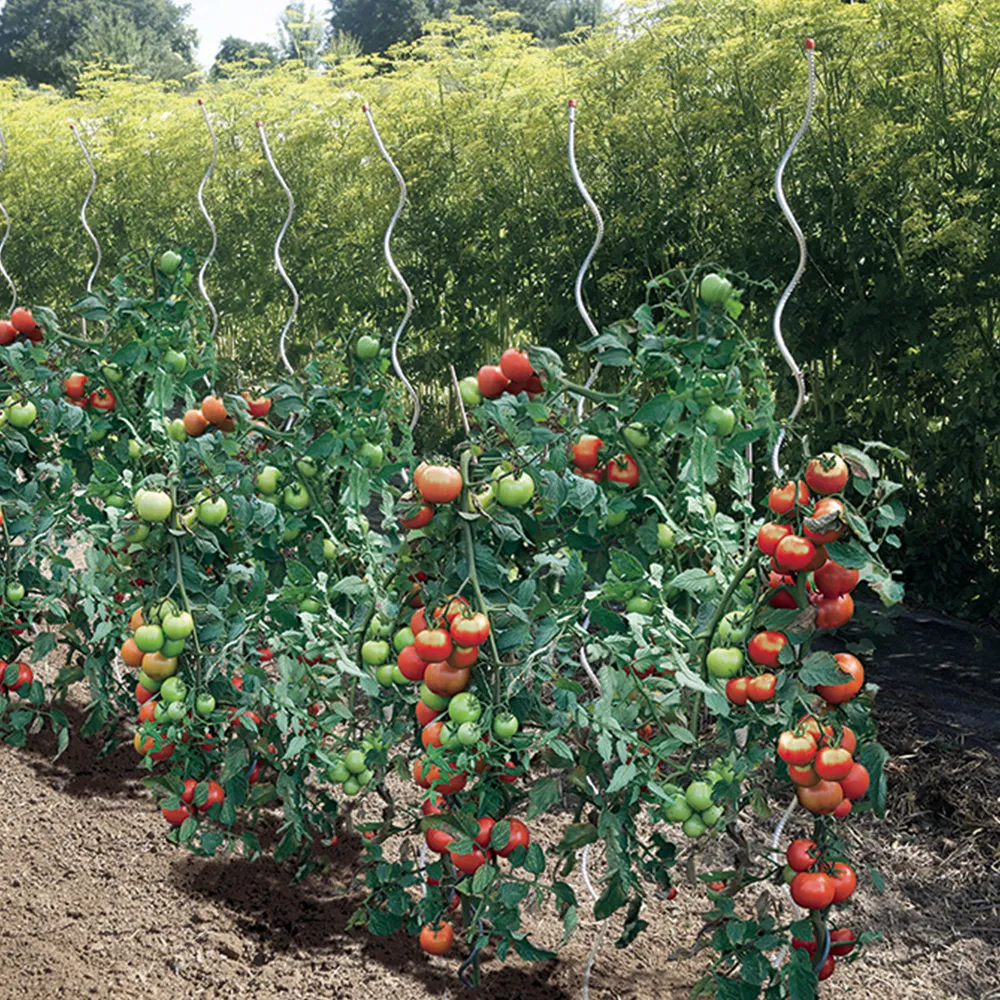Guide to Spiral Tomato Stakes
Mar . 17, 2025 14:14
Growing tomatoes is a rewarding endeavor, but anyone who’s nurtured these juicy gems knows the challenges: sprawling vines, heavy fruit, and the constant battle against pests and weather. Enter spiral tomato stakes—a gardener’s secret weapon for healthier plants and bountiful harvests. In this comprehensive guide, we’ll explore why spiral stakes are revolutionizing tomato cultivation, how to use them effectively, and why they outshine traditional support methods.
Why Spiral Tomato Stakes? The Science Behind the Design
Spiral tomato stakes, often made from galvanized steel or powder-coated iron, combine durability with smart engineering. Their helical design isn’t just visually appealing—it’s functional. Here’s why they’re a game-changer:
Natural Growth Guidance
The spiral shape mimics how tomato vines naturally twist toward sunlight. As plants grow, they wrap effortlessly around the stake, reducing the need for manual tying. This minimizes stem damage and stress, promoting vigorous growth.
Maximized Airflow & Sun Exposure
Unlike flat cages or wooden stakes, spiral stakes allow 360° air circulation, reducing fungal diseases like blight. Sunlight penetrates evenly, ensuring all sides of the plant thrive.
Space-Saving Efficiency
Perfect for small gardens or container planting, spiral stakes grow with your plants. No bulky cages taking up precious real estate!
Year-Round Durability
High-quality steel stakes resist rust and bending, lasting 5–10 years—unlike wooden stakes that rot or plastic ones that crack under UV exposure.
Choosing the Right Spiral Stake: Size, Material, and Setup
Not all spiral stakes are created equal. Follow these tips to pick the perfect match:
1. Height Matters
Determinate Tomatoes (bush varieties): Opt for 4–5 ft stakes.
Indeterminate Tomatoes (climbing varieties): Choose 6–7 ft stakes to support continuous growth.
2. Material Considerations
Galvanized Steel: Ideal for humid climates; resists corrosion.
Powder-Coated Steel: Adds a pop of color (green, black) while preventing rust.
Thickness: Look for stakes with an 8–10 mm diameter for stability.
3. Installation Tips
Early Placement: Insert stakes at planting time to avoid root damage later.
Angle for Success: Tilt stakes slightly outward to create a wider base as plants grow.
Secure Anchoring: Drive stakes 12–18 inches into the soil for wind resistance.
Spiral Stakes vs. Traditional Supports: A Head-to-Head Comparison
Still using cages or wooden stakes? Here’s why spiral stakes dominate:
| Feature | Spiral Stakes | Tomato Cages | Wooden Stakes |
|---|---|---|---|
| Ease of Use | Self-clinging vines; no tying | Requires manual stem threading | Frequent tying with twine |
| Durability | 5–10+ years | 2–3 years (plastic rusts) | 1–2 years (rots) |
| Space Efficiency | Vertical growth; compact footprint | Bulky; hard to store | Requires horizontal trellising |
| Cost Over Time | Higher upfront, lower long-term | Low upfront, frequent replacement | Cheap but labor-intensive |
Pro Tips for Maximizing Your Spiral Stake Success
Prune Strategically
Remove suckers (side shoots) below the first flower cluster to direct energy upward. Spiral stakes work best with 1–2 main stems.
Pair with Companion Plants
Basil, marigolds, or garlic planted nearby deter pests and enhance tomato flavor.
Winter Care
Remove stakes in fall, clean with a vinegar solution, and store indoors to prolong lifespan.
Common Mistakes to Avoid
Overcrowding: Space plants 24–36 inches apart for airflow.
Delayed Installation: Stakes added late risk damaging established roots.
Ignoring Weight Limits: Heirloom varieties (e.g., Beefsteak) may need supplemental ties during fruiting.
FAQs About Spiral Tomato Stakes
Q: Can I reuse spiral stakes for other plants?
A: Absolutely! They’re perfect for peppers, beans, or climbing flowers like sweet peas.
Q: Do spiral stakes work in containers?
A: Yes—choose compact 4–5 ft stakes and pair with 5-gallon pots.
Q: How do I prevent metal stakes from heating up in the sun?
A: Powder-coated stakes absorb less heat. Alternatively, wrap the base with burlap.
Conclusion: Grow Smarter, Not Harder
Spiral tomato stakes are more than a trend—they’re a testament to innovative gardening. By providing natural support, improving plant health, and saving space, they empower growers at every level. Whether you’re nurturing a single patio plant or a backyard tomato forest, investing in spiral stakes means investing in seasons of juicy, unblemished harvests.
Ready to transform your tomato game? Grab your spiral stakes, roll up your sleeves, and let those vines climb their way to greatness! 🌱🍅





















